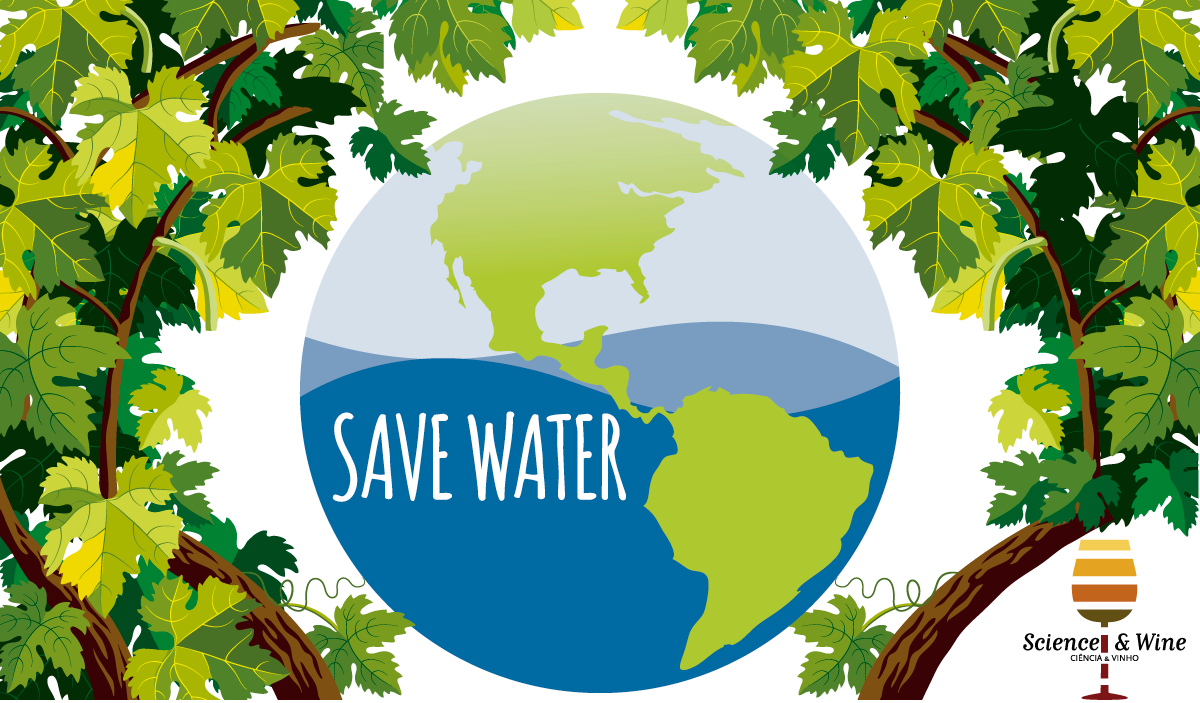by Bruno Suter, Roberta Triolo, David Pernet, Zhanwu DAI, Cornelis Van Leeuwen
Climate change will result in an increase in temperature and an intensification of drought in many regions across the globe (IPCC, 2014). Measuring seasonal plant water status is an essential step in choosing appropriate adaptations in management strategies to ensure yield and quality of agricultural products in these changing conditions. The water status of grapevines is known to be a key factor for yield, grape composition at ripeness and wine quality (Van Leeuwen et al., 2009).
Predawn leaf water potential (PLWP) and stem water potential (SWP) proved to be simple and precise indicators for assessing grapevine water status and subsequent same-day spatial comparisons. A drawback of SWP is that it does not allow for temporal comparisons, because the measured value is impacted both by soil water availability and climatic conditions on the day of measurement.
This study first aimed at providing a model that separates the effect of soil water content from the effect of climatic conditions on the SWP value. A subsequent standardization of the SWP value to predefined reference climatic conditions would allow for its comparison under different climatic conditions. For these purposes, SWP and PLWP were temporally assessed on three soil types in Saint-Émilion (Bordeaux, France) in 2015 and on five soil types in Margaux (Bordeaux, France) in 2018 using a pressure chamber (Table 1).

SWP measurements on two consecutive days with contrasting climatic conditions allowed to assess the impact of these conditions on SWP values. The differential water status of grapevines on the different soils are shown in Figure 1.
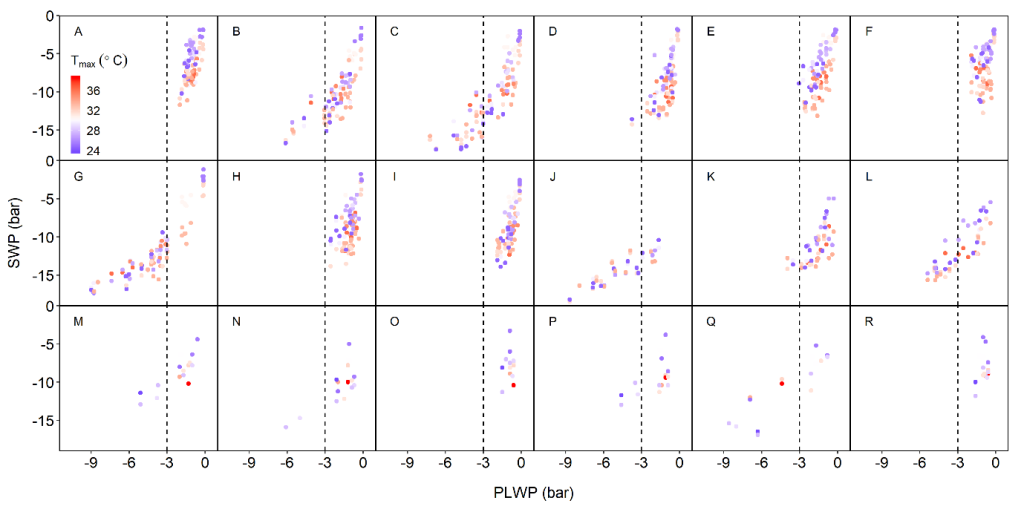
A large portion of the variability in SWP values was explained by PLWP. Model selection further showed that the addition of maximum air temperature and seasonality explained a significant amount of the remaining variability in SWP values.
SWP values could be successfully standardized to a theoretical value under reference climatic conditions, which allows for temporal comparisons of SWP values.

In this equation the user will have to determine the temperature (Tmax) to which the SWP value will be standardized.
A plant-based measurement, such as the water potential, can be considered as the most straightforward indicator of plant water status as it integrates the effects of soil, plant, and atmospheric conditions. More precise interpretation of SWP values provides winegrowers with a tool to more adequately implement short- and long-term management strategies to adapt to drought in order to ensure yield and grape quality.
Those interested in the full-length article can download it at: https://www.frontiersin.org/articles/10.3389/fpls.2019.01485/full
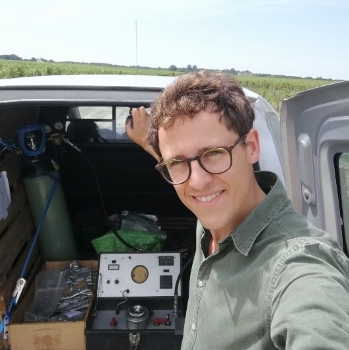
Bruno Suter 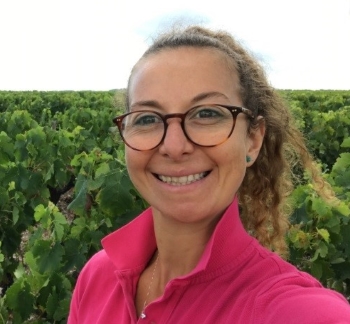
Roberta Triolo 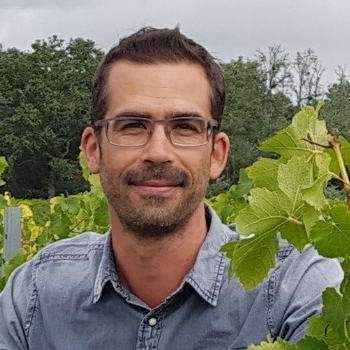
David Pernet 
Zhanwu Dai 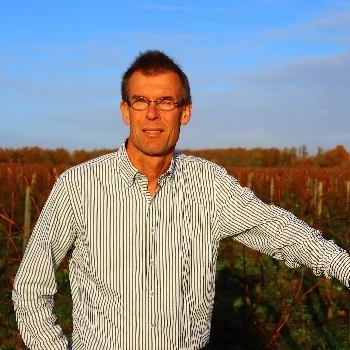
Cornelis van Leeuwen 
Bruno Suter is an agronomist (Bordeaux Sciences Agro, Wageningen University) and he specializes in soil-plant water relations and sugar accumulation dynamics in grapevine.
Roberta Triolo has a PhD in viticulture and enology, and is specialized in grape berry physiology. She now works as a consultant for wine estates in the Bordeaux area and as research project manager at the consultancy division of SOVIVINS.
David Pernet is an agronomist working as a consultant for wine estates in the Bordeaux area as well as abroad. He is the director of the consultancy division of SOVIVINS, a consultancy company and laboratory created in 2002 with skills ranging from soil studies to the analysis on wines.
Zhanwu Dai is a professor at the Institute of Botany, the Chinese Academy of Sciences, Beijing, China. He is mainly interested in modelling the regulation of grape quality in various environments.
Cornelis van Leeuwen is professor viticulture at Bordeaux Sciences Agro and the Institut des Sciences de la Vigne et du Vin Bordeaux. His research focusses on the effect of terroir in viticulture and water relations in vines.
References:
- IPCC (2014). Summary for Policymakers. In: Climate Change 2014: Impacts,Adaptation, and Vulnerability. Part A: Global and Sectoral Aspects. Contribution of Working Group II to the Fifth Assessment Report of the Intergovernmental Panel on Climate Change. [Field, C.B., V.R. Barros, D.J. Dokken, K.J. Mach, M.D. Mastrandrea, T.E. Bilir, M. Chatterjee, K.L. Ebi, Y.O. Estrada, R.C. Genova, B. Girma, E.S. Kissel, A.N. Levy, S. MacCracken, P.R. Mastrandrea, and L.L.White (eds.)]. Cambridge, United Kingdom and New York, NY, USA: Cambridge University Press.
- Van Leeuwen, C., Trégoat, O., Choné, X., Bois, B., Pernet, D., and Gaudillère, J.-P. (2009). Vine water status is a key factor in grape ripening and vintage quality for red Bordeaux wine. How can it be assessed for vineyard management purposes? OENO One 43, 121–134. doi:10.20870/oeno-one.2009.43.3.798.
Some of the vectores used in post image: Vetores por Vecteezy

